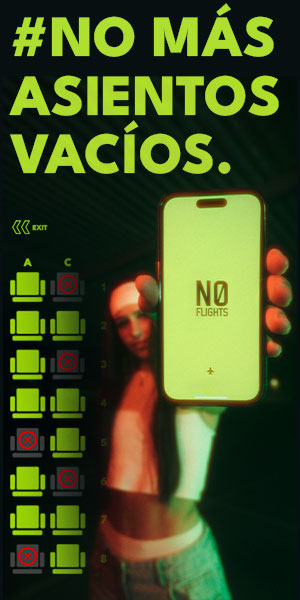
Mientras aquí en la piel de toro, olvidándonos de Sentencias judiciales no sólo discutibles, sino absolutamente criticables desde el punto de vista técnico aeronáutico-juridicamente tambien-, nos resulta imposible pensar en una declaración de un responsable en España en esos términos. INAER, por ejemplo en el día de ayer soltando la prenda de que sus pilotos "cumplen la programación de días de trabajo y horas de vuelo", jugando con la ruleta rusa que permite una normativa premeditadamente difusa, oficialmente ininteligible, y juridicamente imposible de comprender.
Aquí en lugar de "just culture", la cultura aeronáutica es la justa. El perfil de los que ostentan esos cargos -"ostentóreos" que decía aquel- no se ajusta a lo que el sector demanda. Aquí el perfil político es el que prima sobre el técnico. Aquí el profesional que pretende ser riguroso con su profesión aeronáutica, acaba siendo calificado, incluso por sus propios compañeros de "toca pelotas". Lo he oído en numerosas ocasiones, conteniendo el puño izquierdo y el derecho para no hacer lo indebido.
Los héroes al otro lado del charco en aviación son aquellos que amerizan o "acuatizan" en el Hudson y salvan las vidas de sus pasajeros. Son talentos de la propia sociedad, son valores de la aviación, y son reciclados una vez jubilados para que aporten su experiencia DEMOSTRADA y su saber profesional. Aquí se les hostiga, por no decir se les hostia casi literalmente hablando en pasillos de centros oficiales por esbirros de cuello duro. Les puedo contar infinitas anécdotas, pero una, de la que fuí testigo directo nos aboca a los improperios más severos de un superior a un subordinado, vía telefónica, a los que pudimos asistir en vivo y en directo. La fuente del furor era un testimonio directo del odio, la crueldad y el desprecio más elemental y más humano.
El artículo que reproducimos a continuación del Washington Post, es la prueba palmaria de que ha de hacerse hoy, mejor que mañana, toda una revolución conceptual si lo que se quiere es que volar en España sea más seguro, hoy mejor que mañana. Esto es lo que les debemos a los que pusieron la mejilla, y la otra tambien, durante años por la seguridad operativa en nuestro país. Estos son nuestros héroes. Estos son uno de los nuestros, cuando volamos…
FAA's new rules aim to prevent airline pilots from flying while dangerously fatigued (THE WASHINGTON POST-22 de diciembre de 2011.-)
The government told passenger airlines Wednesday they'll have to do more to ensure pilots aren't too tired to fly, nearly three years after the deadly western New York crash of a regional airliner flown by two exhausted pilots.
The Federal Aviation Administration's update of airline pilot work rules, some of which dated to the 1960s, reflects a better understanding of the need for rest and how night shifts and traveling through time zones can increase errors.
"This is a big deal," Transportation Secretary Ray LaHood said. "This is as far as our government has ever gone" to protect the traveling public from pilot fatigue.
Carriers have two years to adapt to the new rules. The FAA estimated the cost to industry at $297 million over 10 years, a fraction of the $2 billion a year that an airline trade association had estimated the draft proposal released by FAA over a year ago would cost.
The airline industry had opposed the draft rule as too costly for the safety benefits it would achieve. But FAA officials made substantial changes to the final rule to lower the cost. Several expensive reporting and training requirements were eliminated.
Safety advocates have been urging FAA for over two decades to update pilot work rules, but previous efforts stalled after airlines and pilots unions were unable to agree on changes. Those efforts were revived after the February 2009 crash near Buffalo that killed 50 people. Families of the dead have lobbied relentlessly for more stringent regulations to fight pilot fatigue.
The rules would limit the maximum time a pilot can be scheduled to be on duty – including wait time before flights and administrative duties – to between nine and 14 hours. The total depends on the time of day pilots begin their first flight and the number of time zones crossed.
The maximum amount of time pilots can be scheduled to fly is limited to eight or nine hours, and pilots would get a minimum of 10 hours to rest between duty periods, a two-hour increase over the old rules. The minimum amount of time off between work weeks will be increased 25 percent, and there will be new limits on how many hours per month pilots can fly. Pilots flying overnight would be allowed fewer hours than pilots flying during the day.
But cargo carriers – which do much of their flying overnight when people naturally crave sleep – are exempted from the new rules. The FAA said forcing cargo carriers to reduce the number of hours their pilots can fly would be too costly when compared with the safety benefits.
Imposing the rules on cargo airlines like Federal Express or United Parcel Service would have added another $214 million to the cost, FAA officials said.
The exemption for cargo carriers, which runs counter to the FAA's goal of "one level of safety" across the aviation industry, drew strong criticism from pilots unions.
"To potentially allow fatigued cargo pilots to share the same skies with properly rested passenger pilots creates an unnecessary threat to public safety. We can do better," said Robert Travis, president of the Independent Pilots Association, which represents UPS pilots.






